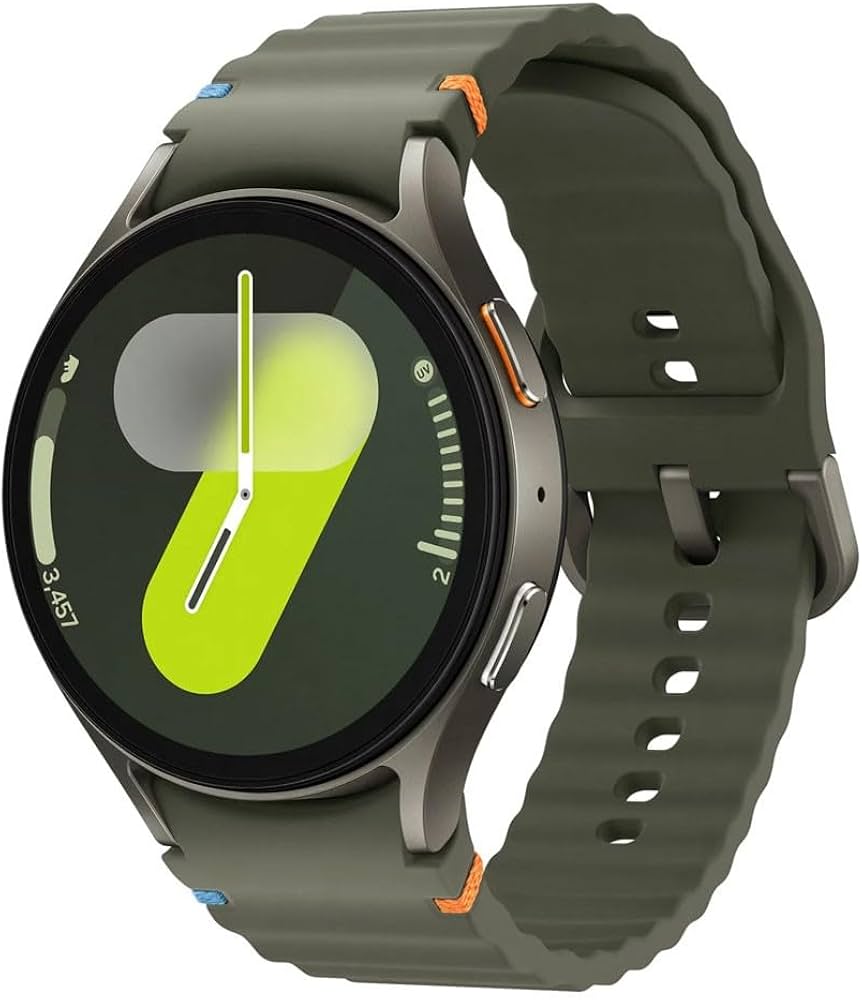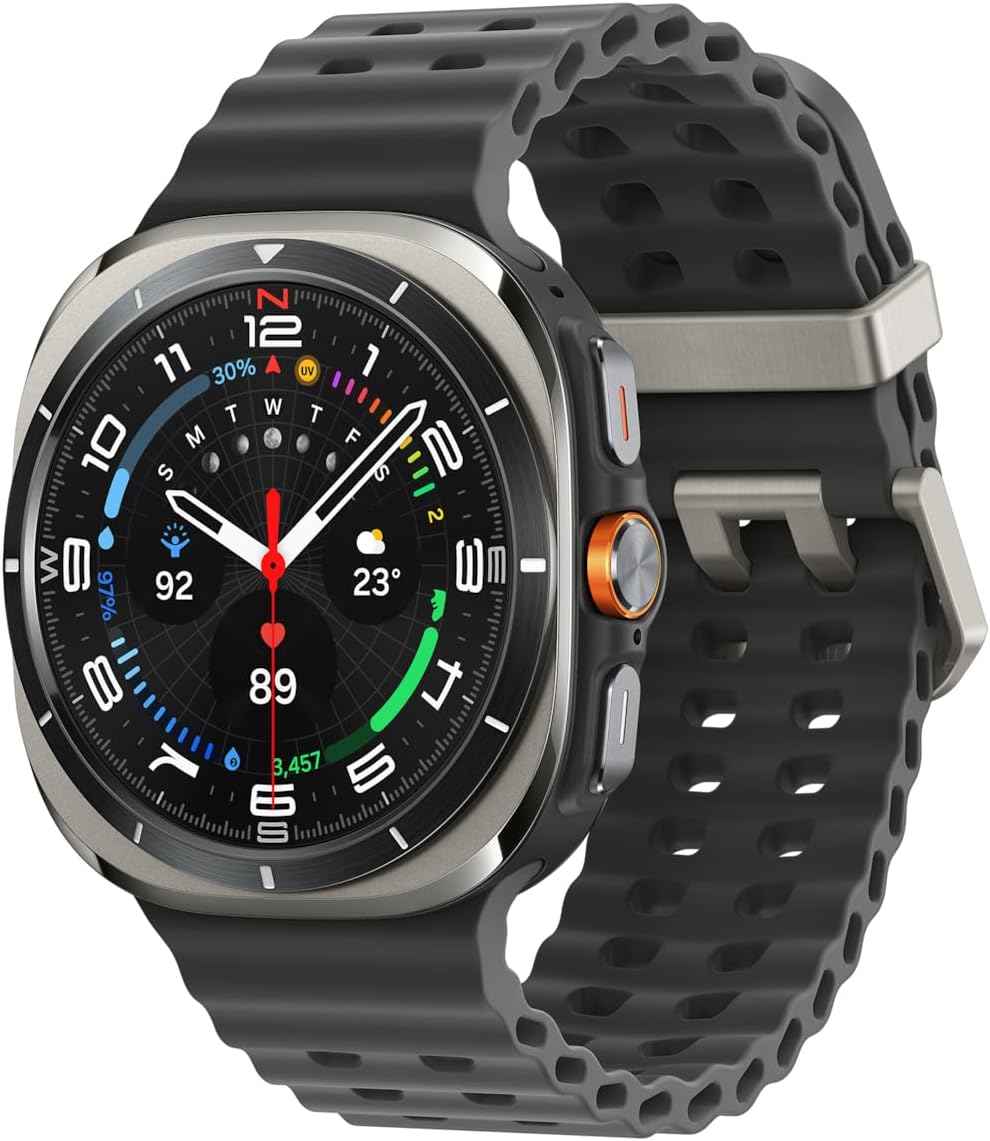You know that feeling when you look at two things with the same engine under the hood, but one’s clearly built for mud, cliffs, and chaos—while the other just wants to grab a coffee and catch a train? That’s exactly what’s happening with the Samsung Galaxy Watch Ultra and the Galaxy Watch 7. On paper, it’s like comparing twins. But the moment you strap them on, you realize these watches don’t live the same life.
Same chip, same software, same sensors—and yet, they couldn’t be more different in attitude. One’s built like it’s gearing up for Everest. The other? It’s all about subtlety, daily flow, and classic smartwatch vibes. So if you’re sitting there, torn between rugged charm and clean simplicity, let’s unpack what really separates these two.
Size, shape, survival: the rugged vs the everyday
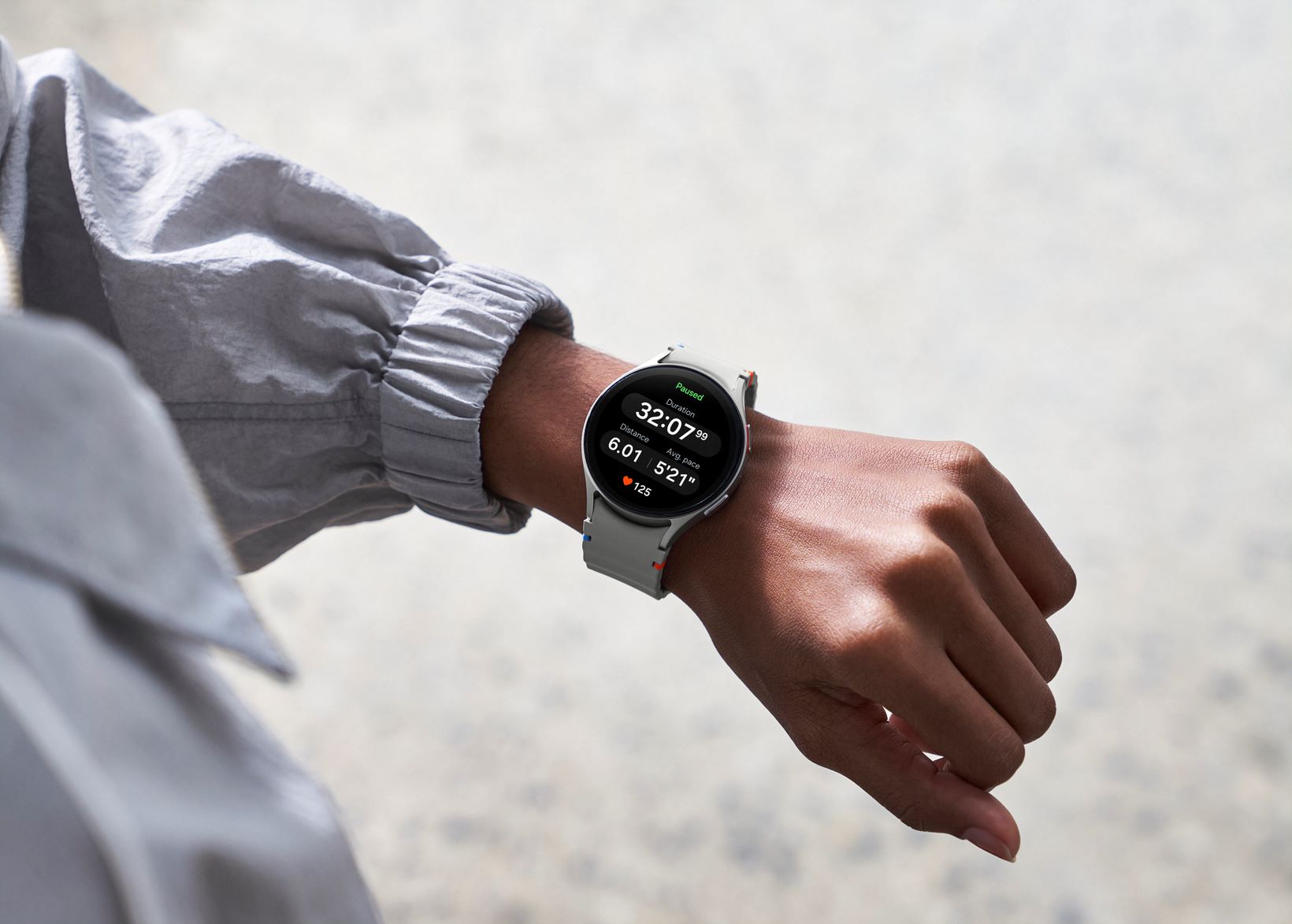
Look, we all have that one friend who shows up to brunch in hiking boots “just in case.” That’s the Galaxy Watch Ultra. At 47mm, with a chunky titanium frame and a squared-off silhouette, it makes a statement—even before it lights up. The case feels built for impact. It’s got 10ATM water resistance, military-grade durability (MIL-STD-810H), and sapphire glass over the 1.5-inch screen.
It’s serious kit. And you feel it on your wrist—literally. It’s bold, it’s confident, and honestly, it looks like it could take a punch.
The Galaxy Watch 7, on the other hand, slips quietly into your life. It comes in two sizes, 44mm and 40mm, and it doesn’t try to turn heads. It’s lighter, thinner, and made for comfort, not combat. You still get sapphire glass, but with a more modest 5ATM water resistance. It’s fine for rain, the pool, or sweaty workouts, but maybe don’t cliff-jump with it.
The Ultra also tosses in a third, programmable Quick Button. That might not sound like much, but if you’ve ever tried launching a workout with wet fingers on a tiny screen, you’ll appreciate that physical shortcut more than you’d expect.
The Watch 7 lets you swap out bands with any standard 20mm strap. The Ultra? Proprietary bands only. They’re excellent—built for trail, water, and heavy use—but yeah, you lose the aftermarket freedom. For style hounds, that might be a dealbreaker.
Same screen tech, different presence
You’re getting a beautiful screen no matter which one you pick. Both use Super AMOLED panels with full-color always-on support, excellent brightness, and a flat design that’s easy to use and hard to scratch. The resolution is sharp, the blacks are deep, and the animations look silky.
On the Ultra, that 1.5-inch screen feels massive thanks to the squared housing. It doesn’t give you more pixels, but the display feels more commanding—great for maps, messages, and outdoor readability.
The Watch 7 matches it in the 44mm size, but drops to 1.3 inches on the 40mm model. That’s not a huge loss, but it does make things feel a bit more cramped if you’ve got big thumbs or aging eyes.
Same brightness. Same clarity. Just different shape, weight, and wrist real estate.
Performance: no surprises here, they’re twins
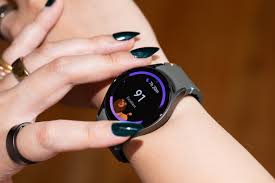
Here’s where there’s zero drama: both watches are powered by the new 3nm Exynos W1000 chip, with 2GB of RAM and 32GB of storage. It’s fast, smooth, and finally delivers the kind of responsiveness that Galaxy Watches have sometimes lacked.
App launches, fitness tracking, navigation—it all just works. No lag, no weird stutters, no compromises. The leap from previous generations is real. And since they both run Wear OS 5 with One UI Watch 6, the day-to-day experience is nearly identical.
So whether you go Ultra or not, you’re getting top-tier performance for Android wearables right now. Period.
Battery: the real separator
This is where we stop pretending these watches are equals. The Galaxy Watch Ultra packs a 590mAh battery that just keeps going. Like, multiple days of normal use or full weekends with GPS and training tracking on. No joke.
The Galaxy Watch 7? It’s got 425mAh in the 44mm and just 300mAh in the 40mm. That means daily charging is basically mandatory, especially if you use sleep tracking or run a lot of background health monitoring.
Charging speeds aren’t wildly different. Both use WPC-based wireless charging and take around 80 minutes to top up. But when you only need to do that every few days with the Ultra? You stop caring how long it takes.
So if battery life matters—like, if you hate seeing 15% before lunch—the Ultra’s the obvious choice.
Same sensors, totally different use cases
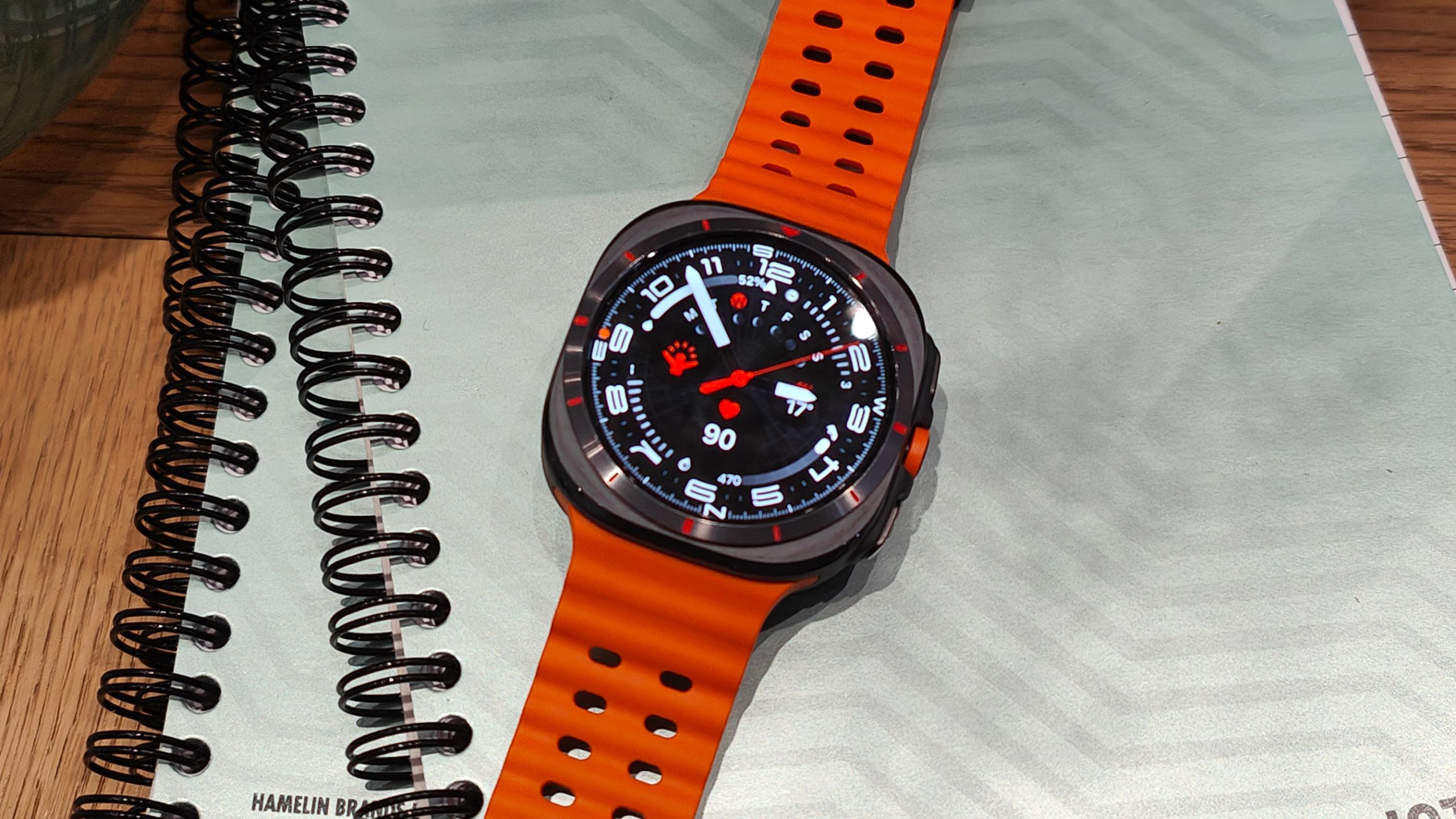
On the inside, the story gets weirdly symmetrical again. Both watches have the upgraded Samsung BioActive Sensor with heart rate, SpO2, ECG, body composition, and temperature tracking. They’re also the first to offer on-device sleep apnea detection, which could be a big deal for a lot of folks.
They both support over 100 workout types and can auto-detect activities like running, walking, rowing, or elliptical training.
So what makes them different here? Context.
The Ultra is made for the outdoors—hiking, paddling, climbing, running in the rain, sleeping in a tent. That extra Quick Button, higher water resistance, and durable frame make a huge difference when you’re sweaty, moving fast, or wearing gloves.
The Watch 7? It’s happier in the gym, the office, or your living room. Same sensors, same data—but in a lighter, more wearable body. So if you’re logging 10k steps a day but not running marathons, the Watch 7 does everything you need.
Connectivity: no surprises, no compromises
Let’s not overthink this—both watches support Bluetooth 5.3, dual-band Wi-Fi, GPS (plus Glonass, Beidou, and Galileo), NFC, and optional LTE. Pairing is seamless, notifications come through reliably, and syncing with Samsung Health is quick and consistent.
No exclusive perks here. Whether you pick the Watch 7 or the Ultra, your phone connection experience will be virtually identical.
Wear OS 5: a unified experience
Since they run the same OS, you’re not missing out on anything critical feature-wise. Wear OS 5 with One UI Watch 6 is polished, fast, and packed with Google and Samsung tools. Assistant, Maps, Wallet, Samsung Health—they’re all baked in.
Custom tiles, quick replies, and offline Spotify or YouTube Music support? Both have it. It feels fluid, consistent, and finally competitive with Apple Watch in terms of ecosystem depth.
Again, no secret weapons hidden in the Ultra’s code. The only differences come from the body, battery, and rugged touches—not the software.
Band compatibility: one open, one closed
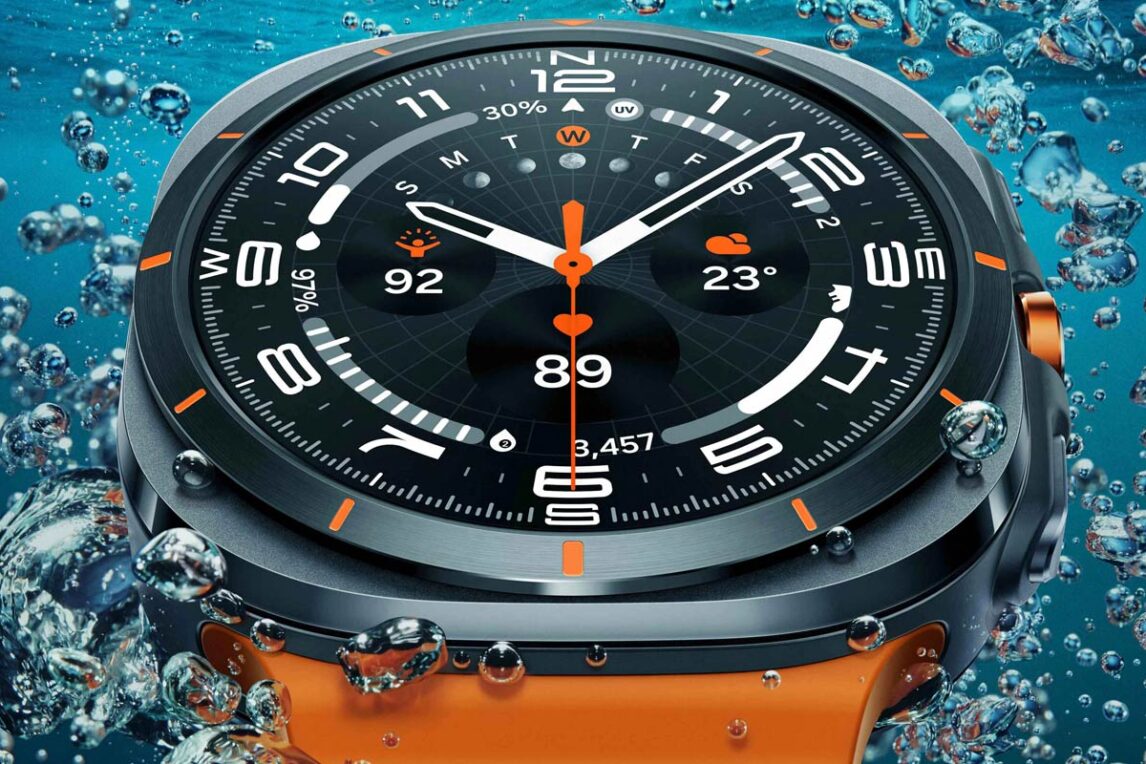
This one’s simple but important. The Watch 7 keeps using standard 20mm bands. That means your old straps still work, and third-party choices are endless. Leather, metal, nylon, silicone—you name it, it fits.
The Ultra ditches that for a proprietary system. The included bands are premium and activity-specific (like marine or trail), but if you want to swap for something more stylish or third-party? Good luck.
So if you love changing your look every week, that’s a definite point for the Watch 7.
Let’s be real: the Ultra is the more complete smartwatch
Okay, let’s not pretend the Galaxy Watch 7 isn’t excellent. It is. It’s sleek, lightweight, fast, and feature-rich—especially for daily wear. But when you zoom out and look at every corner of the experience, the Galaxy Watch Ultra just does more.
It lasts longer. It survives more. It works harder in bad conditions. And it does all of that without losing performance or sacrificing comfort too badly (assuming your wrist can handle the size).
The bigger battery alone is a game changer. Add the Quick Button, tougher design, higher water resistance, and you’ve got a device that’s not just good—it’s purpose-built.
Sure, it locks you into Samsung bands. Sure, it’s heavier. But if you care about endurance, outdoor utility, and not charging every night? This is the smartwatch to get.
The Galaxy Watch 7 is a great choice for people who want “smart” without the bulk. But if you’re even slightly adventurous, or just hate worrying about battery life, the Watch Ultra isn’t just the better option—it’s in a whole different category.
You don’t buy it to flex. You buy it because it’s got your back when things get messy. And hey, that might just be worth the extra wrist weight.

